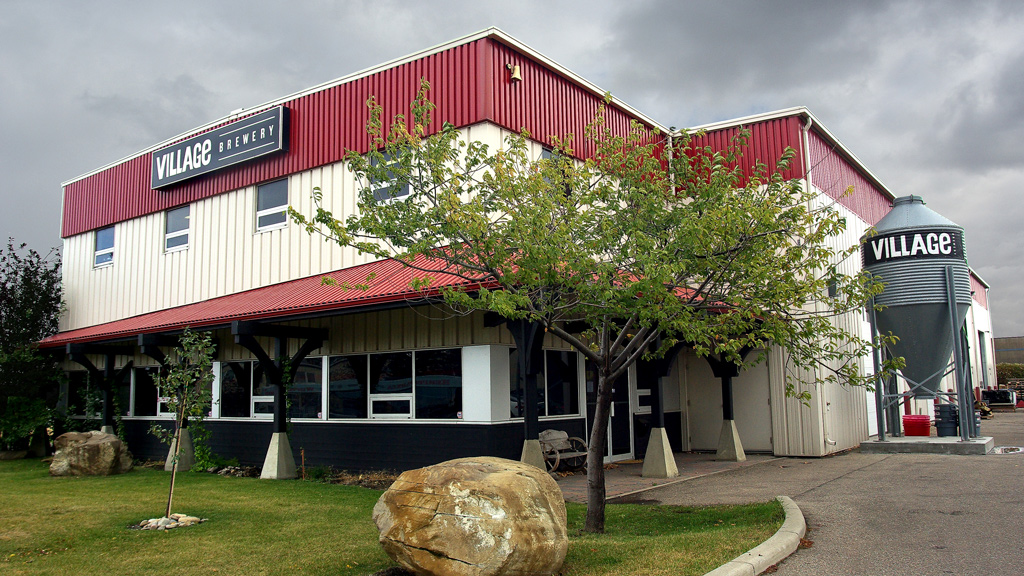A unique project in Calgary has successfully transformed treated wastewater into the amber brew many Canadians enjoy.
The University of Calgary’s Advancing Canadian Water Assets (ACWA) recently partnered with Village Brewery and Xylem Inc., an American water technology company, to produce Alberta’s first beer made with reused water.
Village Brewery made a limited batch of Village Blonde Natural Golden Ale using wastewater provided by ACWA.
“The beer shows that water reuse can be a safe and important part of our sustainable future,” said Christine O’Grady, ACWA program co-ordinator. “Wastewater can be treated using advanced treatment technology, making it into a reliable and safe water supply for many uses.”
Before being sent to the brewery, the water was treated at ACWA with tertiary treatment technologies, including advanced oxidation and nano-filtration.
It was then tested to make sure it met the standards set out by Alberta Health Services for water reuse, including pathogen reduction requirements and Canadian Drinking Water Guidelines.
“The beer went on sale on Aug. 22, 2020, Earth Overshoot Day,” said O’Grady.
Earth Overshoot Day marks the date when humanity has supposedly exhausted nature’s budget for the year. For the rest of the year, our ecological deficit is maintained by drawing down local resource stocks and accumulating carbon dioxide in the atmosphere.
“It tasted just like regular beer,” said O’Grady. “It was a neat project that demonstrated the possibilities of water reuse. We don’t have an infinite supply of fresh water.”
Village Brewery operations manager Jeremy McLaughlin said he produced 1,000 litres of beer, or about 2,000 cans, from treated wastewater.
“We used it to make some Village Blonde ale, which is our biggest brand and widely available in Calgary,” said McLaughlin. “And we produced special labels for the beer that explained where the water to make it had come from.”
Upon learning the source of the water used to make the beer, customers’ reactions ranged from “shocked and appalled” to extremely enthusiastic, said McLaughlin.
“Most people were positive,” he said. “It tasted virtually the same as beer made with our usual water source.”
McLaughlin said Village Brewery was “super excited” to be part of the initiative.
“It was a very involved process to prove a point, that it was possible to make good beer with treated wastewater,” he said.
The source of the treated wastewater, ACWA, is an initiative of the Urban Alliance, a strategic partnership between the City of Calgary and the University of Calgary.
ACWA supports research and development, knowledge transfer, derisking and piloting of leading-edge wastewater treatment technologies.
According to ACWA, its mandate is “to facilitate the transformation of today’s wastewater research into tomorrow’s innovative technologies to recover resources, improve process efficiencies and protect receiving environments to benefit local and global communities.”
ACWA’s facility is located in Calgary’s Pine Creek wastewater treatment plant.
The facility has ultra-filtration and nano-filtration membrane modules, plus advanced oxidation capability.
Thanks to growing environmental consciousness, there may be more than the occasional beer in Canada’s wastewater future.
In the 1970s, the Government of Singapore commissioned a study to determine the feasibility of producing reclaimed water.
Although the study found it was technically possible, the technology was too expensive and unreliable at the time.
By the 1990s, however, the cost and performance of membrane technology had improved considerably.
In 1998, Singapore’s public utilities board tested the latest membrane technology’s use in water reclamation for potable purposes.
Two years later, it commissioned a full-scale demonstration plant that could produce 10,000 cubic metres daily.
A battery of tests and audits showed the reclaimed water, which by now was known as NEWater, was a safe and sustainable water source.
Today there are five NEWater plants in Singapore supplying up to 40 per cent of the city-state’s current water needs.
By 2060, NEWater is expected to meet up to 55 per cent of Singapore’s future water demand.






Recent Comments
comments for this post are closed